Petra—magical and mind-blowing

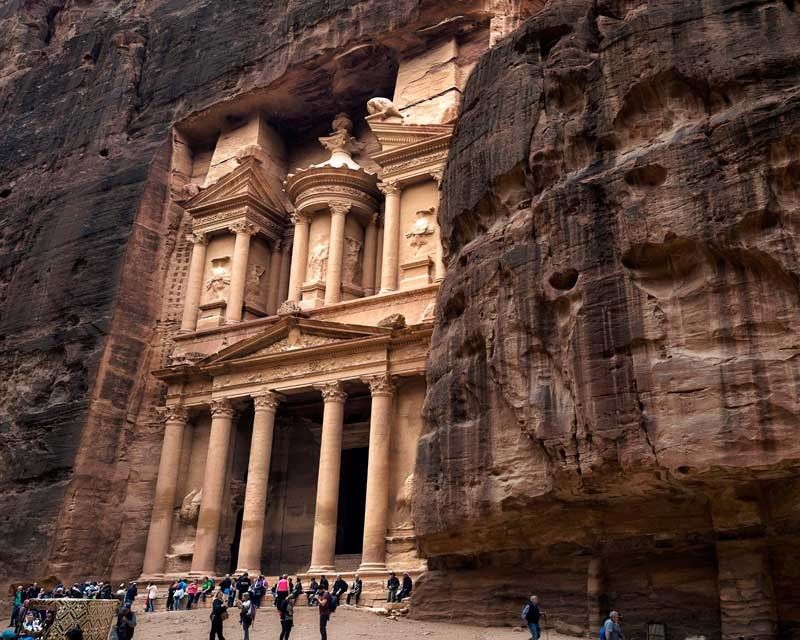
The ancient city will always remain in our hearts and minds and it is arresting to listen to the sound of Petra’s silence.
Awe and wonder take on new meaning in Petra. This spectacular sanctuary in Jordan, known as one of the Seven New Wonders of the World, will certainly sweep you off your feet with its pinkish-orange rock formations and natural ancient crevices.
Petra welcomed our group from Adams Express Travel in the stillness of the night. In its silence, the city is mind-blowing, considering we had yet to discover the following day the centers of attraction in the city: the Treasury and the Siq.
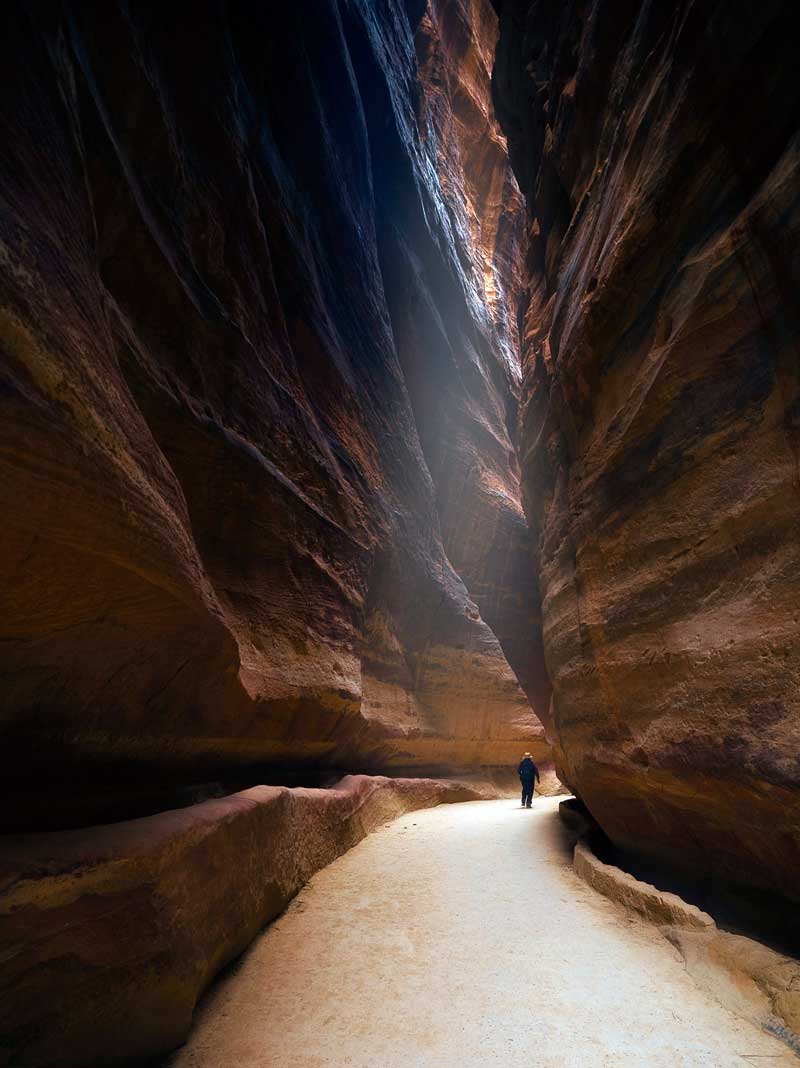
Petra, the spectacular sanctuary in Jordan, is known as one of the Seven New Wonders of the World, It will certainly sweep you off your feet with its orange rock formations and natural crevices.
Petra is located about 50 miles south of the Dead Sea and 170 miles southwest of modern Amman, Jordan.
From the promontory of our hotel, Hyatt Zaman Hotel and Resort Village, the houses and buildings on the elevated part of the city winked and glistened as they were bathed in soft yellow lights. The momentary drizzle heightened the cold but inside us was a cinder of joy, a thrilled anticipation of how magical our experience would be once we came face to face with Petra’s rose- and orange-colored rocks. (Trust me, even if it was my second time to experience Petra, I was still excited to see it. Petra has that effect — you don’t get tired of being mesmerized by it.)
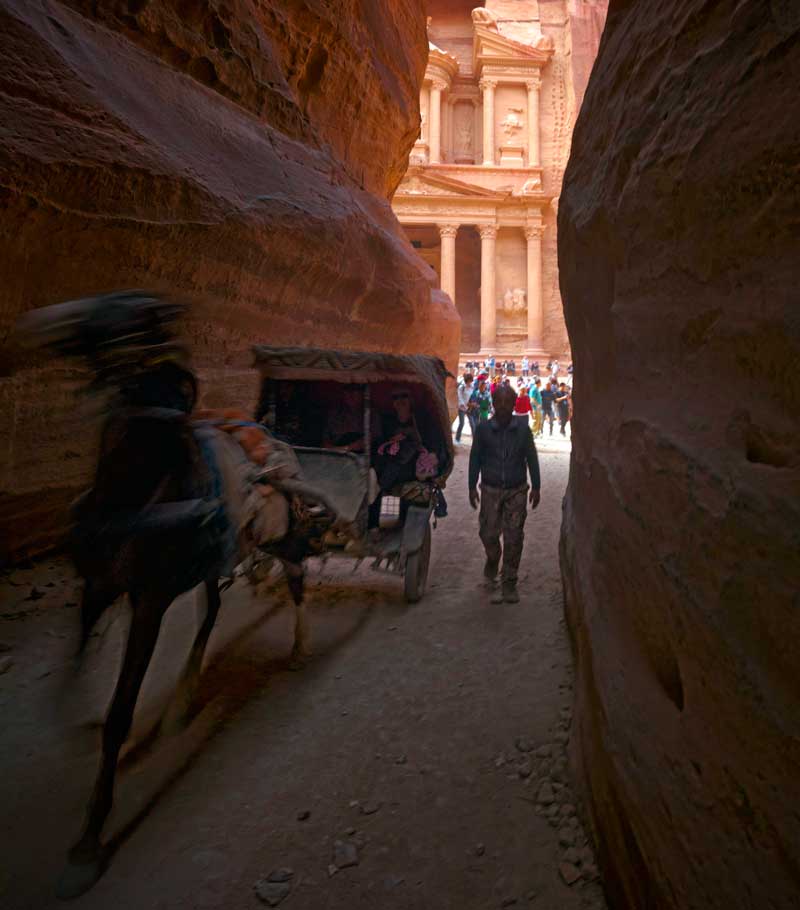
Try a horse ride as you explore the beauty and mystery of Petra.
The magic began at Hyatt Zaman when my best friend of 24 years Bum Tenorio and I retreated to our well-appointed suite. Our room looked like a stylized cave of the Bedouins. After all, the resort village is one of the most attractive places in Jordan where tourists meet and enjoy their stay in the country.
Right after our sumptuous meal of local Jordanian food, Bum and I braved the cold and discovered that Hyatt Zaman is not a hotel in the strictest sense, but an attractive cultural resource rich in history and heritage — a glimpse of what the late 19th-century rural Jordan must have felt like.
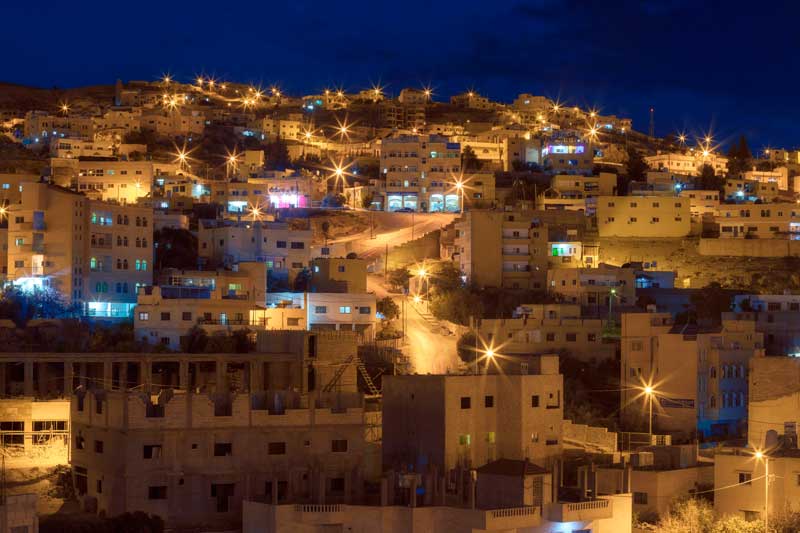
Petra is magical when illuminated at night.
Grand arches and vaulted ceilings of houses made of stones are the toasts of the hotel. These stones, we were told, keep cool in summer and warm during wintertime. The facilities at the village are built around themes and this allows guests to experience the old way of life of the Bedouins. Hyatt Zaman will amaze you as it takes you one century back, yet with all the modern conveniences.
The following day, we headed to the rose-colored city of Petra, which was 12 kilometers from the hotel.
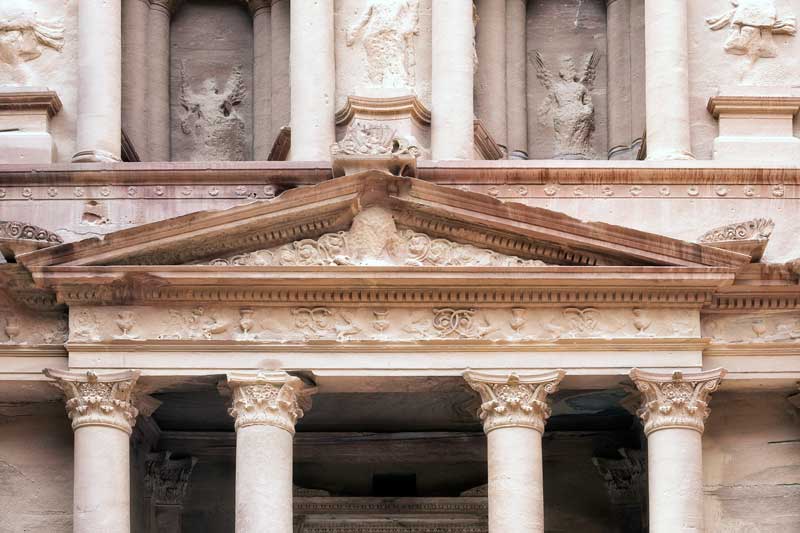
The façade of the Treasury is a sight to behold.
Excitement was palpable when we started to walk the unpaved ground that would lead to, first, the Siq, then the Treasury. While many of us decided to discover Petra by foot, others opted to ride the horse or the horse-drawn carriages.
At the beginning of our walk, the rock formations before us resembled fairy hats in craggy forms. The tinge was brown and after 20 minutes of walking the colors of the rock started to become orange in hue. Someone from the group said the colors changed depending on the ray of the sun. Bum and I continued our walk and from time to time our friend Anna Lisa Ayo, the tours manager of Adams Express Travel, would catch up with us with a bottle or two of water to offer. It was my second time to see this place yet I had great excitement in my heart.
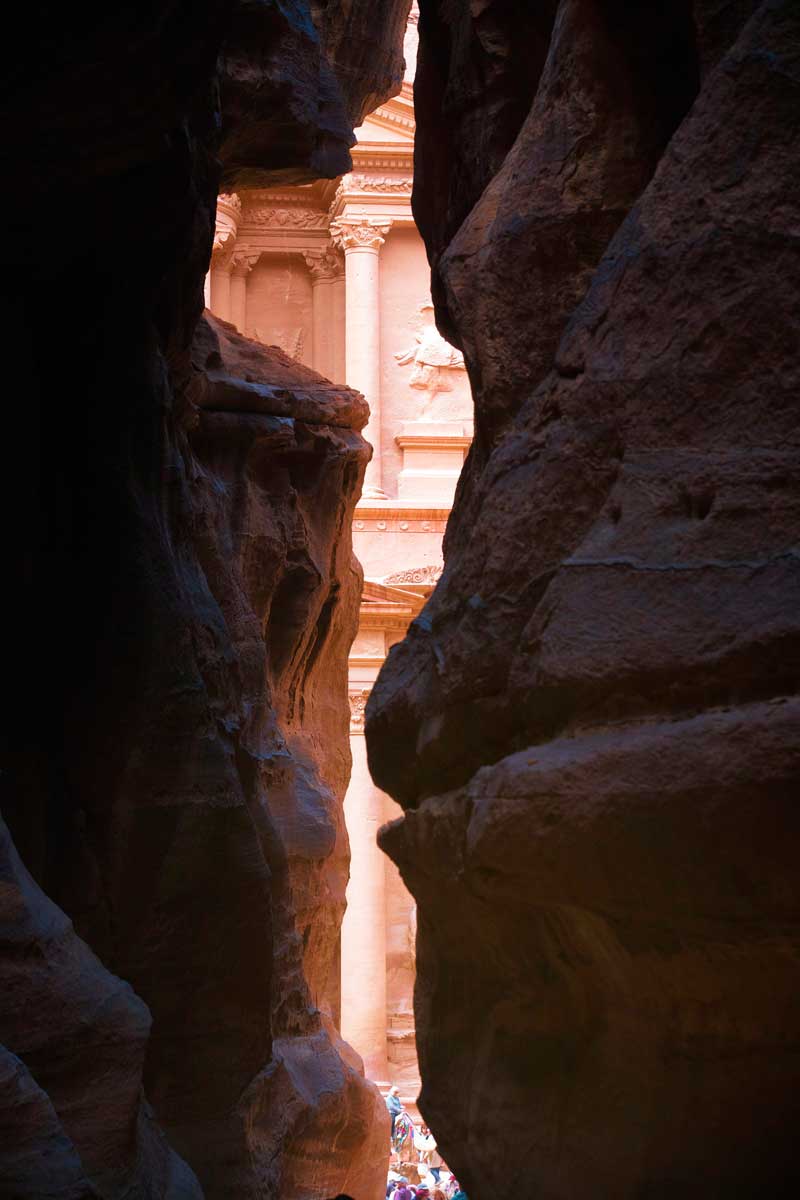
The magic and splendor of Petra.
When we reached the entrance to the Siq, members of our group were awed, almost in disbelief, by this natural spectacle.
Petra’s expansive sandstone hedge over the dry valley of Wadi Musa resembles stacks of fire-hued clay. This arid desert showcases the 200-meter- high walls that keep the Siq permanently cast in shadow. The Siq is a mile-long narrow gorge that leads into the city of Petra. The silence at Petra is so arresting that seemingly no one can hear lone footsteps in the Siq’s shadow and stone.

Adam’s Express Travel participants at the Treasury in Petra. (First row) Kar Gonzales, Jonnah Joven, Gloria Bradley, STAR’s Bum Tenorio, Simplicia Bacol, Chito Bonono, Fr. Nicolas Penados, Rosalito Reyna, Karen Reyna, Dra. Ofelia Luis; (second row) Dr. Daisy Go, Kat Gonzales, Marinel Santander, Diana Abono, Tin, Feliza Calderon, Mary Pinat, Dr. Lourdes Cubillan, Amapaula Tanlangit, Sonia Cuarto, Helene Bonono, Fe Uson, Rosita Casane, Alma Dumadag, Manuel Dumadag, Concepcion Clavero, Manuel Clavero, Clemente Luis, Michael Sy, Ailyn Sy; (third row) Abelardo Go, Jose Benito Bondoc, Maria Theresa Bondoc, Lina Villano, Lulu Asiain, Fernando Cubillan, local guide Omar Abu Mayleh, Vicelita Anzano, Lino Uson, Felix Casane and Severina Ganancial
Petra, whose prominence in my mind was first created after watching the 1989 movie Indiana Jones and the Last Crusade, was once a lost city, until it was rediscovered by a Swiss explorer named Jean Louis Burckhardt who wrote in his diary in 1812 that Petra “is one of the most elegant remains of antiquity existing.” Lonely Planet describes it vividly: that when Burckhardt crossed Petra’s threshold, he was the first outsider to do so in 600 years. Hidden by its natural fortifications, the city remained obscure to the West since the time of the Crusades. In the past, it was the home of 30,000 people whose survival was desert landscape and was the center of a kingdom four times the size of modern Jordan.
According to archeologist Charles Otloff, the water supply and distribution system of the Nabataean city of Petra in southwestern Jordan has been explored and mapped. An old world like Petra reveals a modern water system and analysis indicates that ancient people of Petra had knowledge of sustainable use of water resources, replete with pipeline systems to maintain a constant supply of water throughout the year.
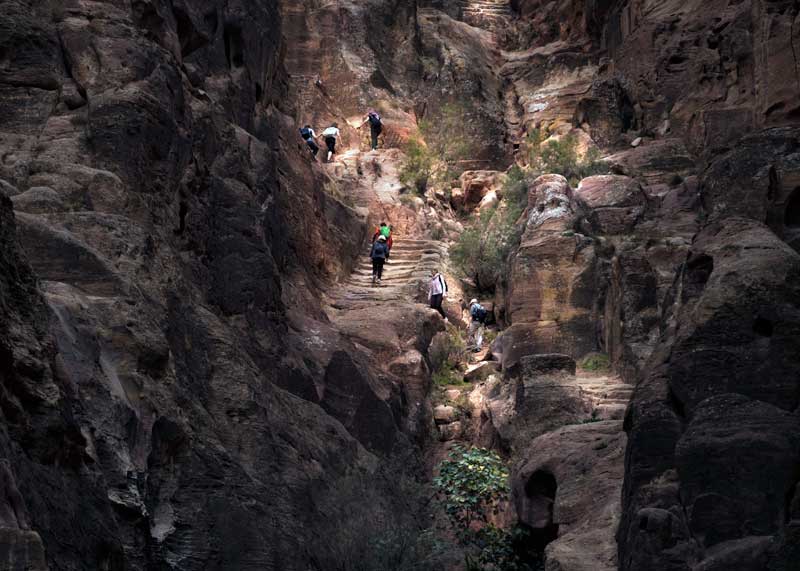
Trek the heights and crevices of Petra.
Petra is one of the new Seven Wonders of the World and no one goes to this city without seeing the Treasury. To enter the Treasury, one needs to walk through the Siq canyon, a 200-meter-high wall of sheer rock. The peace that permeates at the Siq canyon is a celebration that explodes in the heart of the spectator. For one, the canyon is forever cast in long shadows of rock.
What makes the Treasury fascinating is its iconic façade, which details its columns and exquisite carvings directly done from the face of the cliff. Visitors to Petra look forward to being awed by the sight of the Treasury after a 1.5-kilometer walk along the Siq to see the most magnificent of Petra’s sights.
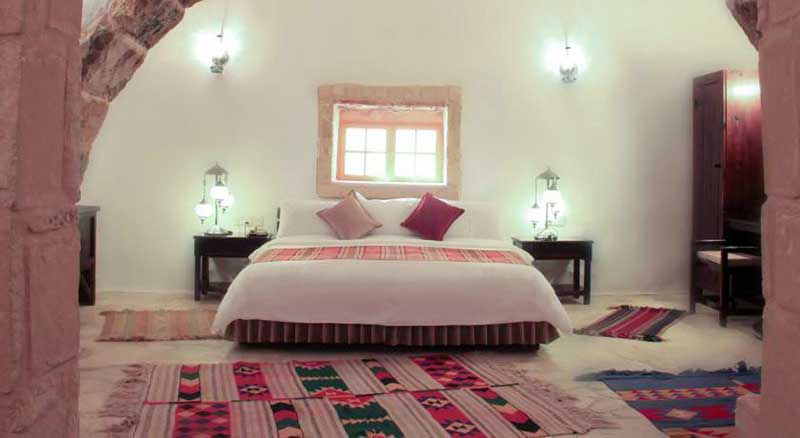
The cozy one-bedroom suite of Hyatt Zaman Hotel.
According to Omar Abu Mayle, our American-educated local tour guide, the Treasury was probably constructed in the 1st century BC. As its design has no precedent in Petra, it is thought that it was carved by Near-Eastern Hellenistic architects.
Omar added there is mystery that shrouds the Treasury, believed to hide ancient treasures of the pharaohs. In an attempt to release the treasure, the Bedouins periodically fired guns at it — the bullet holes are still clearly visible on the urn.
Omar said that when the first Western visitors arrived in Petra in the 19th century, a stream ran from Siq and across the plaza. The stream has since been diverted and the plaza leveled for the sake of tourists.
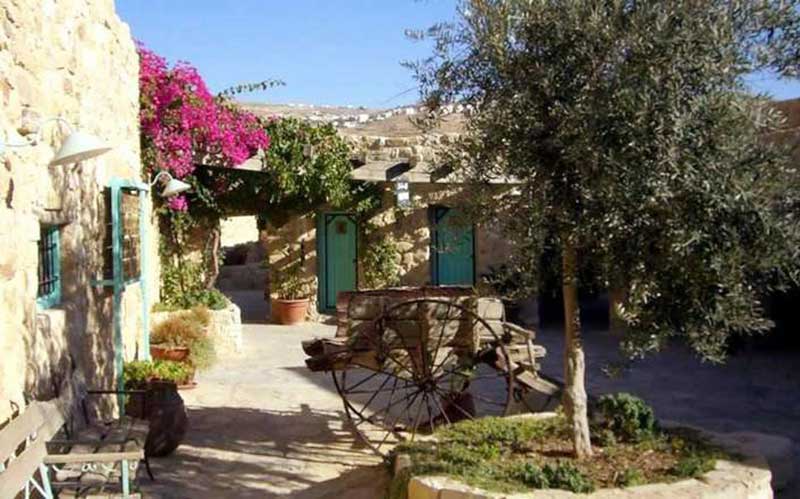
Rustic ambiance of the Hyatt Zaman village.
What did we see in the Treasury? There are two levels in the Treasury decorated with columns, classical rooflines and severely weathered sculptures. Nestled on top of the façade is an eagle, a Nabataean (and Greek) male deity symbol. Tholos may be the fertility goddess of Petra, but El-Uzza (associated to the Egyptian goddess Isis) looms as the central figure on the upper level Tholos. The vertical footholds on either side may have been made to aid the sculptors.
A short distance from the Treasury is another magnificent find. Walk along a street serenaded by a series of columns to Petra’s largest monument and the path will lead you to the Monastery, which was carved from a mountain summit. Like the Treasury, the Monastery is also an inaccurate sobriquet. Online sources say that it was named so because it’s located far away from the center. And there are crosses inscribed in the interior, making it appear like a place of worship although it was more likely used as a temple.
The other places to see are the massive Theatre and the giant Royal Tombs, gazing out over the hidden valley that shelters Petra’s city center. The High Place of Sacrifice offers spectacular views from a mountain-top altar, easily reached by a stepped path.
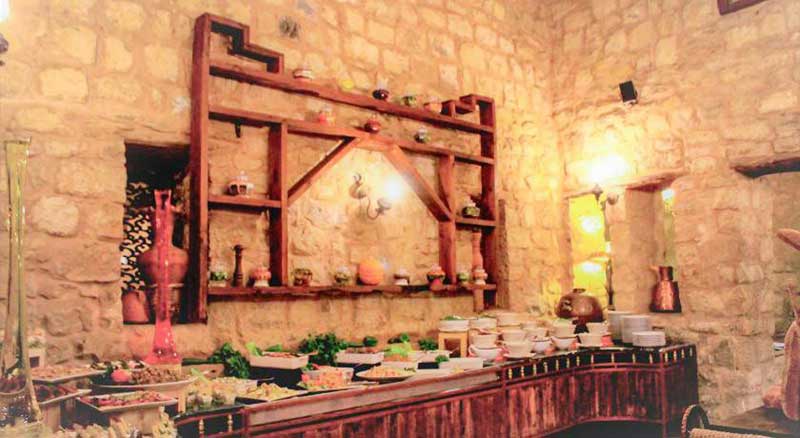
A sumptuous spread awaits you at the Hyatt Zaman Hotel. Photos courtesy of Hyatt Zaman
You will never find a single mention of Petra in the Bible because its Hebrew name is Sela. Sela, like Petra, means “rock.” Sela is mentioned in Isaiah 16:1 and 2 Kings 14:7. Both Petra and Sela are an appropriate name, since much of the city is carved into sandstone cliffs.
The ancient city will always remain in our hearts and minds. Petra, in its silence, is mind-blowing. And it is inevitable to listen to the sound of Petra’s silence.
* * *
Call Adams Express Travel at 522-3876 or 521-1651 or send e-mail to adamstravelcorp. You may also log on to www.adamsexpresstravel.com. Darna Travel is the competent tour partner of Adams Express Travel in Jordan.
Email the author at miladay.star@gmail.com.



















